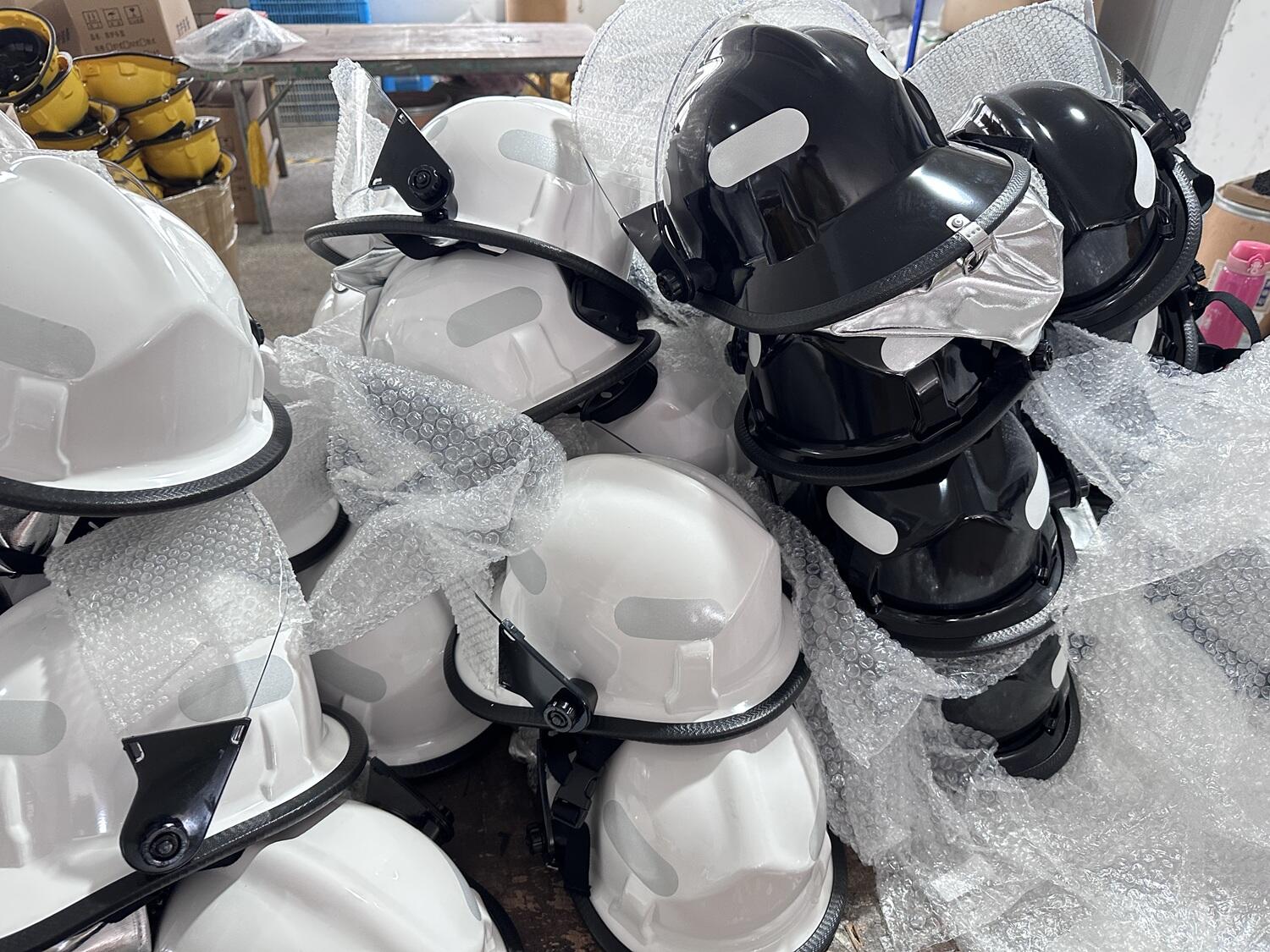In the extreme environments faced by firefighters, every piece of equipment must perform flawlessly – especially when exposed to intense heat and open flames. Standard plastics can melt, drip, or ignite, creating catastrophic failure points. Flame-resistant (FR) plastics, engineered to resist ignition and self-extinguish, are therefore non-negotiable for critical firefighting gear, particularly helmets certified to the EN 443 standard.
Why EN 443 Demands Superior Flame Resistance
The European standard EN 443: "Helmets for Firefighting in Buildings and Other Structures" sets rigorous requirements for firefighter helmet performance. A core focus is fire resistance. Helmets must protect against:
Direct flame impingement
Intense radiant heat
Molten debris or dripping materials
EN 443 mandates specific flame resistance testing (Clause 6.10):
1. Flame Application: The helmet shell is exposed to a propane flame (~800°C) for 60 seconds.
2. Performance Criteria:
● No sustained flaming: Any flames must self-extinguish within 5 seconds after removing the test flame.
● No dripping: Materials cannot produce flaming drips that could ignite secondary fires or injure the wearer.
● Structural Integrity: The helmet must not deform or collapse in a way that compromises protection or fit.
● Retention System Integrity: The chin strap and adjustment system must remain functional.
Failure is not an option. Helmets meeting EN 443 ensure firefighters retain crucial head protection even during direct flame exposure.
Key Flame-Resistant Plastics for Firefighting Applications (EN 443 Focus)
Selecting the right FR plastic involves balancing flame resistance with impact strength, heat deflection, weight, and durability. Common choices for helmets and related firefighting equipment include:
1. Flame-Resistant Polycarbonate (FR PC):
● Why it's used: Outstanding impact resistance (critical for falling debris) combined with inherent clarity (for visors/shields) and good FR performance. Easily molded into complex helmet shapes.
● EN 443 Role: Primary material for helmet shells and transparent visors/faceshields. Must achieve V-0 rating or better.
● Limitation: Heat deflection temperature lower than some high-performance polymers.
2. Flame-Resistant Polyamide (FR Nylon - PA 6, PA 66, PA 66/6):
● Why it's used: Excellent strength, abrasion resistance, and thermal stability. Good chemical resistance against many fireground agents.
● EN 443 Role: Used for structural components, harness anchors, adjustment systems, and reinforcing elements within the helmet assembly. Must meet strict FR requirements.
● Advantage: Retains mechanical properties well at elevated temperatures encountered near fires.
3. Flame-Resistant Polyetheretherketone (FR PEEK):
● Why it's used: Exceptional inherent flame resistance (often UL 94 V-0 at minimal thickness), very high continuous use temperature (~250°C), outstanding strength and chemical resistance.
● EN 443 Role: Used in high-stress, high-heat components where ultimate performance is critical, potentially in specialized helmets or components near extreme heat sources. Offers superior performance beyond basic EN 443 requirements.
● Consideration: Higher cost than PC or Nylon.
4. Flame-Resistant Polyphthalamide (FR PPA):
● Why it's used: High strength and stiffness, excellent dimensional stability under heat, good chemical resistance, and strong FR performance.
● EN 443 Role: An alternative to Nylon for components needing higher thermal or chemical performance while maintaining FR properties.
5. Flame-Resistant Thermoplastic Polyurethane (FR TPU):
● Why it's used: Excellent flexibility, abrasion resistance, and sealing properties.
● EN 443 Role: Used in gaskets, seals, and flexible components integrated into the helmet system, requiring both elasticity and flame resistance.
● Key Considerations When Selecting FR Plastics for EN 443 Helmets
● Certified Performance: Materials must demonstrably pass EN443 fire testing in the final helmet design.
● Heat Distortion: The plastic must maintain its shape and protective function under radiant heat and direct flame.
● Impact Resistance: Non-negotiable for head protection (EN 443 also includes impact tests - Clause 6.5).
● Long-Term Stability: Resistance to UV degradation, moisture, and chemicals (cleaning agents, fuels, smoke residues) over the helmet's lifespan.
● Weight: Lightweight materials reduce fatigue for firefighters during long operations.
● Manufacturability: Compatibility with molding, machining, and assembly processes for complex helmet geometries.
Conclusion: Engineering Safety with FR Plastics
Flame-resistant plastics are fundamental engineering materials safeguarding firefighters' lives. The stringent requirements of EN 443 push material performance to its limits, ensuring helmets provide reliable protection even in direct contact with fire.
Welcome to contact us to buy EN443 standard nylon plastic firefighter helmet.

 EN
EN
 AR
AR
 HI
HI
 JA
JA
 KO
KO
 NO
NO
 RU
RU
 CA
CA
 TL
TL
 IW
IW
 ID
ID
 SR
SR
 UK
UK
 VI
VI
 SQ
SQ
 GL
GL
 MT
MT
 TH
TH
 TR
TR
 FA
FA
 AF
AF
 MS
MS
 SW
SW
 CY
CY
 IS
IS
 MK
MK
 HY
HY
 AZ
AZ
 EU
EU
 KA
KA
 HT
HT
 UR
UR
 BN
BN
 LA
LA
 MN
MN
 NE
NE
 SO
SO
 MY
MY
 KK
KK
 UZ
UZ



